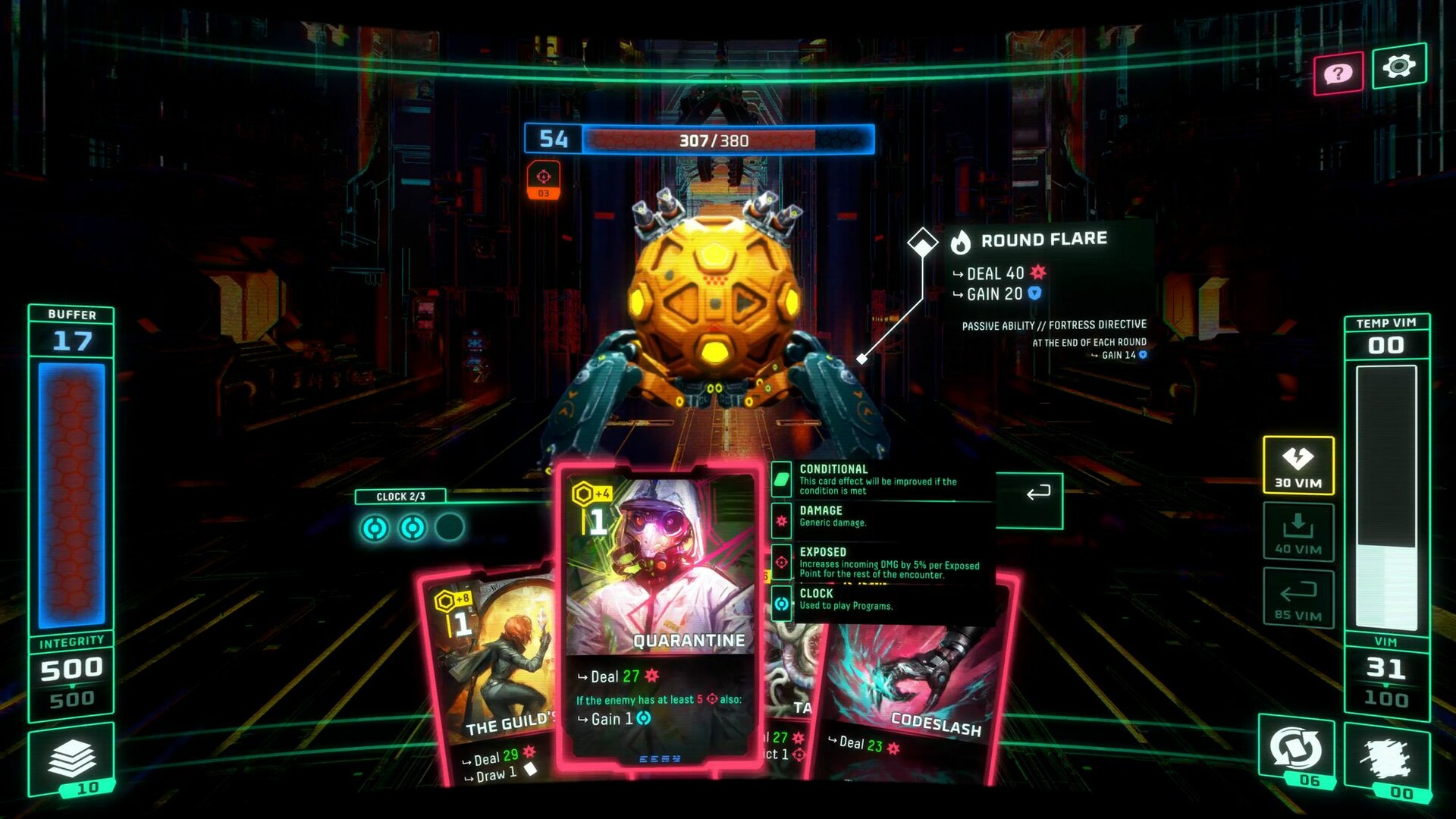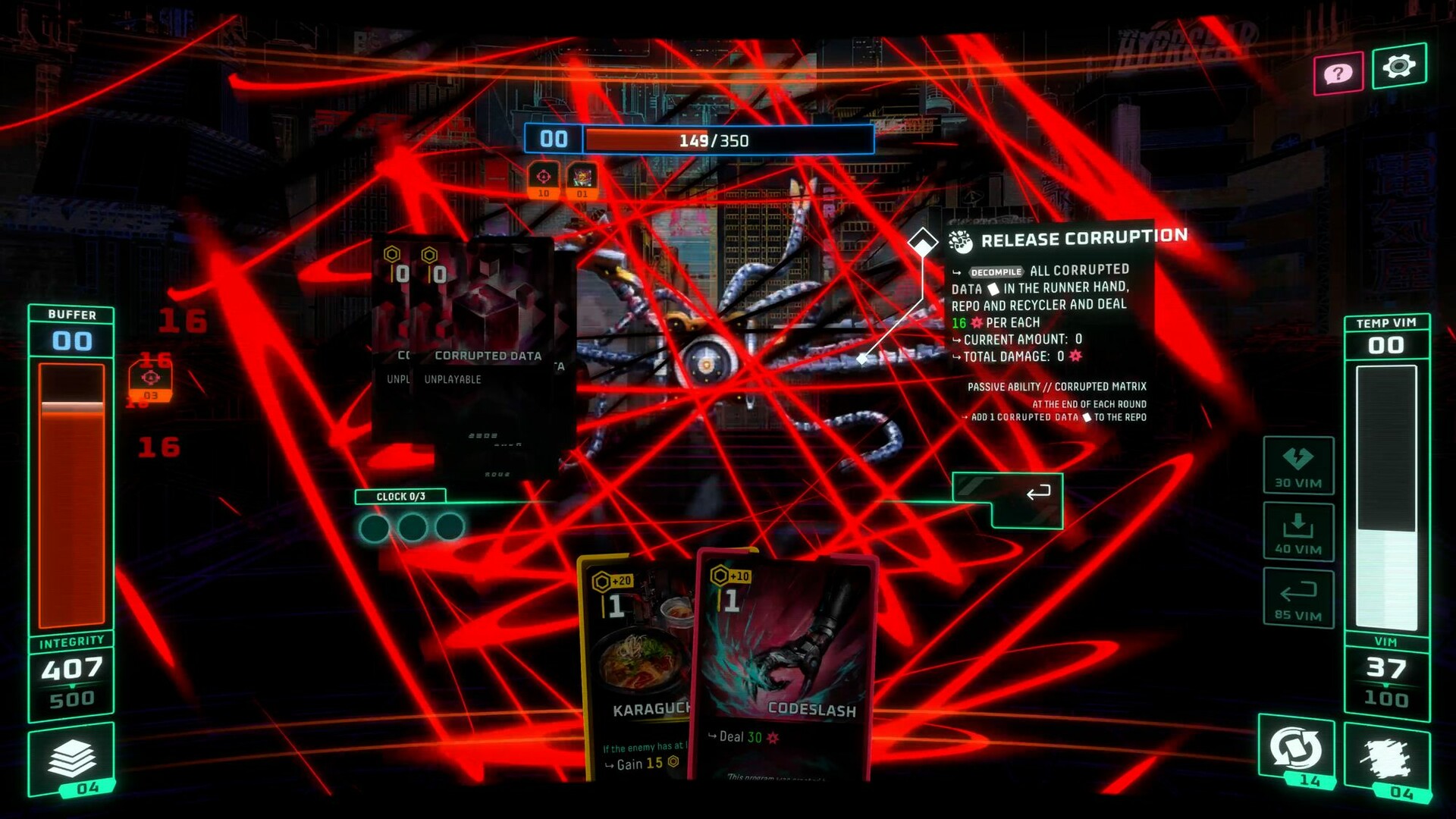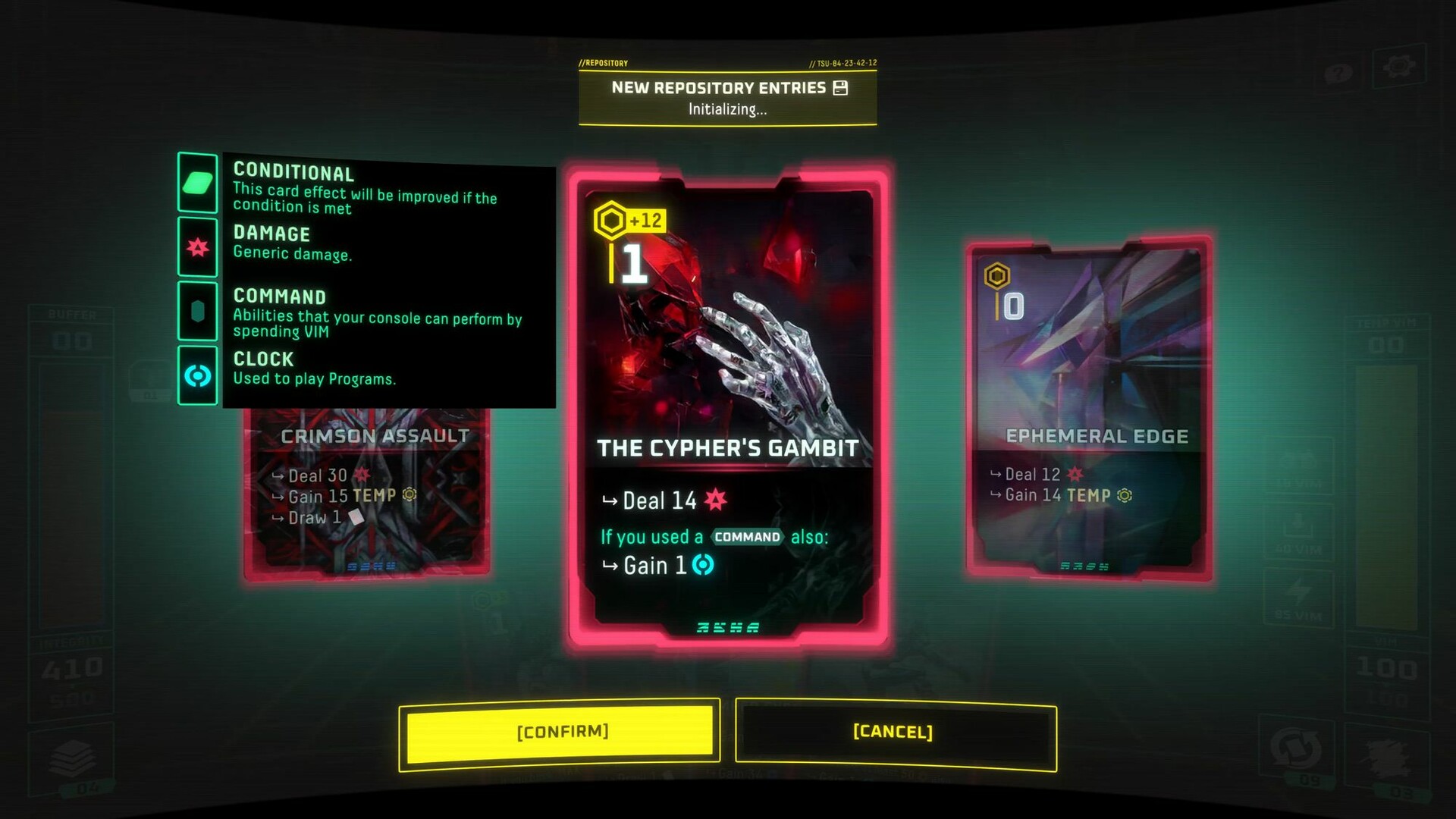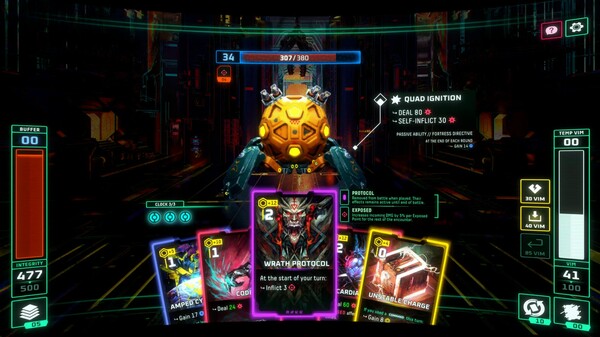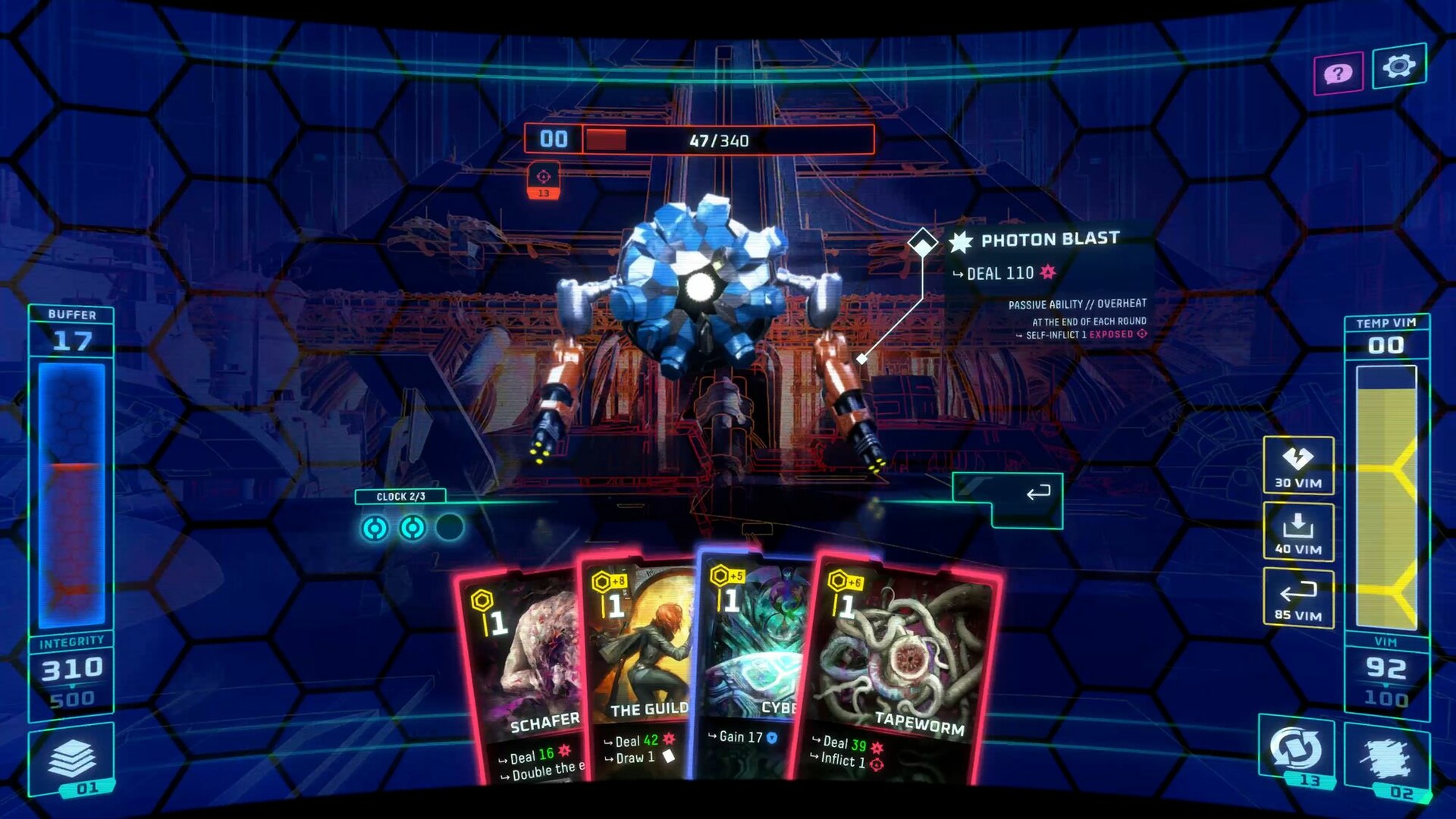

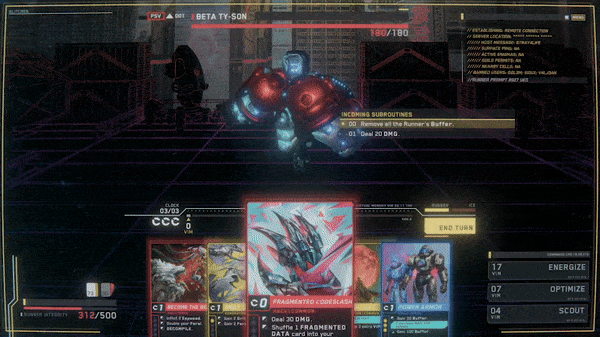
Ever wondered what the love child of a Roguelike Deckbuilder and a Tabletop Boardgame would look like? Here’s the answer: Into The Grid features action-packed card battles and deeply tactical map exploration with resource management.


We designed a unique dual-resource system where each card is played for its effect while simultaneously generating Virtual Memory (VIM), which allows the player to take advantage of even the most suboptimal hands. Use your VIM to activate your Commands during battle and obliterate your enemies’ defenses!


Exploit the Commands - powerful unlockable skills that can be the difference between victory and defeat. Choose them wisely, sync them with your deck, and strategically deploy them for knockout wins.

The Grid is the infinite digital landscape where information lives. Full of riches and dangers, it’s a place where only the sharpest minds can thrive. Experience a layer of depth never seen before in the genre; consider every move as if it were your last because it might be. Fight or flee? Visit this area now or later? Cash in a reward immediately, or hold on to it for an even bigger payoff? The choice is yours, as well as the punishment and the profit.

The Repo is your arsenal, and its program cards, your weapons. Get new Programs as you explore, and scrap your least effective ones to upgrade your best ones. Look out for unique combinations and unlock the ultimate power.

As a hacker, your Console is an extension of your mind and body. Customize it to match your playstyle by unlocking hardware mods and perks. The more you hone your skills, the more options you’ll discover!

Into The Grid includes five distinct characters, each with its own story arc, gameplay mechanics, art, and much more.

[h3]Hello prospective Runners.
Today, wed like to share some insights about our design process regarding the map exploration system in Into The Grid.
So, lets get to it![/h3]
[h1=thebasics]The Basics[/h1]
Thematically, the map represents the Grid in which you are conducting your incursion as a hacker. In the Grid, you are an intruder, so the defense systems are constantly trying to locate you, putting obstacles in your way in their attempt to disconnect you before you reach the Mainframe.
The map is our way of incorporating board game and dungeon crawling mechanics into the game, things we believe have not been explored enough in the Deckbuilder genre. With this, we want to achieve a clear differentiation from the classic model of choosing a pre-made path at the beginning of the run.
The map exploration is an essential aspect of the experience we are creating in Into The Grid and, therefore, you will spend a lot of time on it.
Learning how to navigate the Grid will be a skill youll have to hone, as well as deck-building and Command selection, to play the game successfully.
The Grid will test your strategic thinking and tactical execution capabilities. From a strategic point of view, you will need to consider your short-term objectives (such as obtaining a specific item or upgrade) and how this interacts with your long-term objective, which is to find and breach the Mainframe.
Every decision and every action you take at every stage of the game will have consequences, and it will be up to you and your tactical skills to make sure those align with your main goal.

Procedural generation of a Grid.

[h1=approach]Our approach[/h1]
We created a system that reflects the tension of being somewhere you aren't supposed to be. We want the players to feel like the Grid doesn't want them there and that they won't know how it will react to their presence.
We came up with a procedurally generated labyrinth in which, unlike most games in the same genre, the player must find their way to the Mainframe (the final goal of every run) instead of simply climbing to it in one of a few predetermined ways.
This system allows players to decide whether to explore the map and take risks to gain advantages, upgrades, and resources or go straight for their objectives as directly as possible and finish their mission.Additionally, this mechanic serves an important purpose being the ideal scenario to gradually introduce the rich lore of our universe, increasing the level of immersion of the experience.

[h1=theory]From theory to practice[/h1]
[h2=beginning]Beginning and objective[/h2]
A Grid is made up of Clusters, which are groups of Nodes. The Runners Console represents Nodes as hexagons that they can interact with. Clusters can vary in shape and function as rooms, divided by Gates that impede moving freely from one to the next. This is what we mean when we say ITG has a strong Cyberdungeon crawling element to it.
The Runner begins their incursion into a Grid from an Entry Node, with information about the current Cluster only, the rest is total darkness. From there, they must make their way by unlocking gates and clearing their path in search of the most special Node of all, the Mainframe.
The Trace System
During their incursion into a Grid, the Runner is constantly tracked by surveillance systems that could eventually find them and expel them from the system... or worse.
In the game, this is represented through the Trace system, which indicates to what extent the Grid is aware of the Runner's presence.
Mechanically, the Trace system allows us to reactively adjust the difficulty of the run to the actions that the player takes. As the Trace increases, the Grid becomes more dangerous. The more greedy, noisy, or careless the player is, the more difficult the game becomes.

Intrusion Countermeasure Electronics: ICE (aka The Bad Guys)
ICEs are the classic enemies of the cyberpunk genre, advanced defense programs deployed by server administrators to prevent Runners from achieving their goals.
For Into The Grid, and in our narrative universe, we have created three distinct types of ICE: the Watchers, the Bouncers, and the Sentinels, each with a very specific objective. For each type of ICE, there can be infinite varieties, each with its own set of abilities, strengths and weaknesses.

Watcher ICEs and Trace
Watcher ICEs are the constant observers of the Grid, analyzing everything that happens in the clusters and sending information to the Trace system.
Mechanically, each Cluster has a specific assigned Watcher that defines which Runners actions will increase the Trace level. Some will react to engaging in combat, others to opening gates, and others to specific interactions with the Nodes, among many others.
The Runner must always be mindful of the Watcher that is observing them and plan their actions accordingly.
Bouncer ICEs and Gates
Bouncer ICEs are literally the gatekeepers of the Clusters.
As we have mentioned, to navigate the Grid the Runner must move from Cluster to Cluster in search of the Mainframe. The passage from one Cluster to another is done through Gates, and each Gate is protected by a Bouncer.
The Bouncer determines the conditions the Runner must meet to open the Gate it protects. Some of these conditions may be having to disable the Watcher, defeat all the Sentinels, or interact with the Nodes in a specific way, among others.
Sometimes, the condition of the Bouncer to unlock a Gate will be aligned with that of the Watcher to raise the Trace, putting the Runner in a tight situation.

Sentinel ICE and Combat
Not all Nodes are created equal, and some are particularly better protected than others. This is where Sentinel ICEs come into play.
Sentinels are the main enemies of a Runner during an incursion. In the game, these are the enemies you will face in card combat. Fighting against Sentinels is dangerous but sometimes also necessary to obtain useful items, improve your deck, and continue delving into the depths of the server.


Runners interaction with the Nodes
There are different types of Nodes in the grid and which type they belong to defines what effect the Runners actions will have when interacting with them.
Except for a few exceptions, the Runner can always perform one of three different actions on any given Node:
- Extract: By extracting a Node, the Runner obtains valuable Shards from it, which are used as currency throughout the Run. Each type of Node yields a different amount of Shards.
- Exploit: By exploiting a Node, the Runner takes advantage of a weakness in it, to obtain a benefit. The effect of the exploit is different for each type of Node.
- Rehash: By rehashing a Node, the Runner spends resources to gain powerful and unique advantages to continue their run.

[u]What does each Node do? We will dive deep into that in a future article, so stay tuned![/u]

Don't forget to join our Discord to stay up to date with the news and have direct contact with the team!
[url=https://discord.gg/aXFT7WtXS4]

[/url]
Minimum Setup
- OS: Ubuntu 14.04 LTS
- Processor: 2.0 GhzMemory: 2 GB RAM
- Memory: 2 GB RAM
- Graphics: 1Gb Video Memory. capable of OpenGL 3.0+ support (2.1 with ARB extensions acceptable)
- Storage: 1 GB available space
[ 6417 ]
[ 7154 ]
[ 3628 ]
[ 4850 ]

